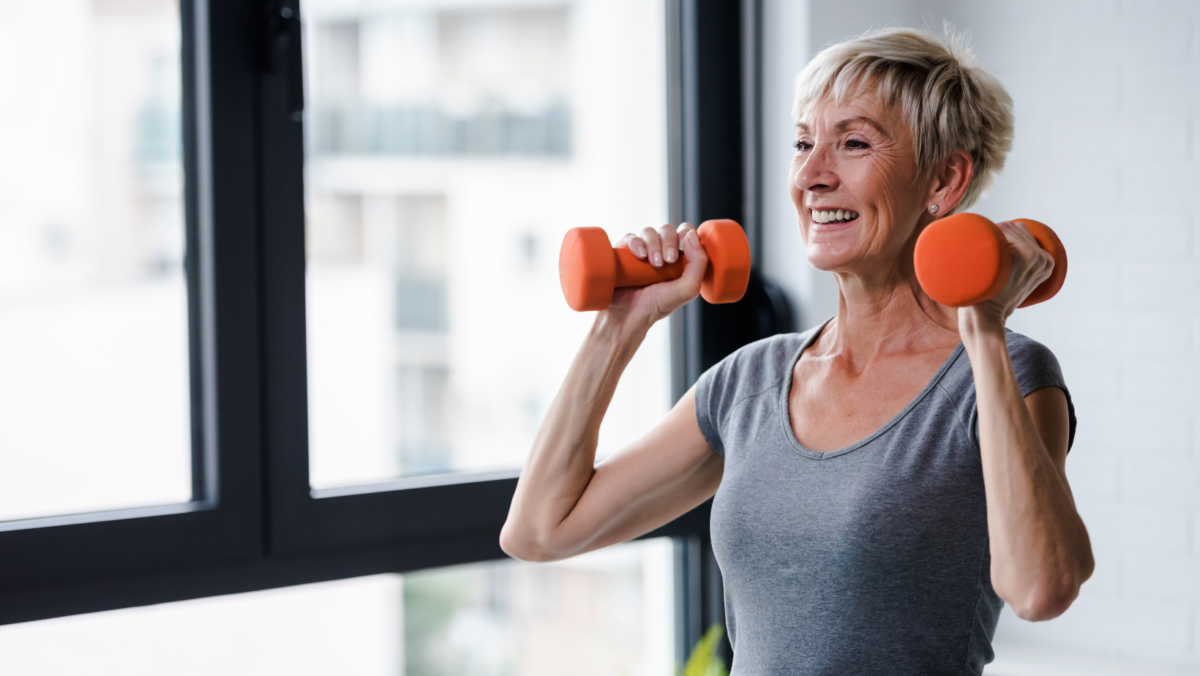
Exercise is an essential part of a healthy lifestyle and it provides numerous benefits. One advantage is keeping our bones strong and healthy. As we age, bone mass decreases and muscle is lost.1,2 Typically after the age of 30, most adults have reached their peak bone mass.2,3 Exercise not only increases bone and muscle strength, it also prevents loss of bone mass and aids in improving balance.3,4 When it comes to bone health, weight-bearing exercises and resistance training are the best choices.3,5 Weight-bearing exercises are those that get you on your feet and allow your body to move against gravity, thus stressing the bones and increasing their strength.2,3,6 Resistance training involves using weights to strengthen muscles and aid in maintaining bone density.7
What kind of exercises should I do?
Physicians recommend that we exercise for at least half an hour each day. Some enjoyable options for weight-bearing exercises include jumping rope, walking, jogging, running, climbing stairs, hiking, dancing, jumping jacks, tennis, and other sports that keep you on your feet. You can incorporate resistance training by completing body weight-exercises, such as squats and lunges, or lifting weights. For patients with heart problems, osteoporosis, and other health conditions, you should consult with your physician before participating in activities that may be strenuous or include higher impact movements (Box).
Exercise is not the only factor
Our bones and muscles keep our bodies moving; therefore, we need to keep them healthy and in motion. Exercise, however, is not the only factor involved in maintaining good bone health. Adequate calcium and vitamin D consumption, decreasing tobacco and alcohol use, and lower stress levels can be helpful as well. Age, hormone levels, and other factors also play a role in bone health.2 The first step to good bone health is to speak with your physician about exercise and any risk factors that can affect your bone and muscle strength.
Author: Mackenzie Pargeon | Columbus, Georgia
References
- Exercise and Bone Health. OrthoInfo from the American Academy of Orthopedic Surgeons. https://orthoinfo.aaos.org/en/staying-healthy/exercise-and-bone-health/.
- Mayo Clinic Staff. Bone Health: Tips to Keep Your Bones Healthy. Mayo Clinic, Mayo Foundation for Medical Education and Research. https://www.mayoclinic.org/healthy-lifestyle/adult-health/in-depth/bone-health/art-20045060.
- Exercise for Your Bone Health. National Institutes of Health Osteoporosis and Related Bone Diseases. https://www.bones.nih.gov/health-info/bone/bone-health/exercise/exercise-your-bone-health
- Benedetti, Maria Grazia et al. The Effectiveness of Physical Exercise on Bone Density in Osteoporotic Patients. Biomed Research International. 2018. https://www.ncbi.nlm.nih.gov/pmc/articles/PMC6323511/
- Hame, Sharon, and Julie Casper. Exercising for Bone Health. The American Orthopaedic Society for Sports Medicine, 2016, https://www.sportsmed.org/aossmimis/STOP/Downloads/SportsTips/ExerciseBoneHealth.pdf.
- Boden, Scott. Regular Weight-Bearing Exercise. Spine-Health. https://www.spine-health.com/conditions/osteoporosis/regular-weight-bearing-exercise.
- Mayo Clinic Staff. Exercising with Osteoporosis: Stay Active the Safe Way. Mayo Clinic, Mayo Foundation for Medical Education and Research. https://www.mayoclinic.org/diseases-conditions/osteoporosis/in-depth/osteoporosis/art-20044989
Last edited on April 10, 2024